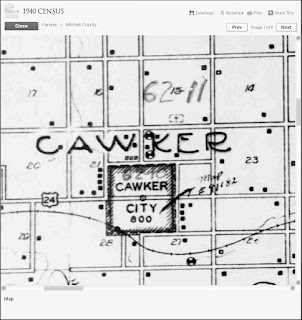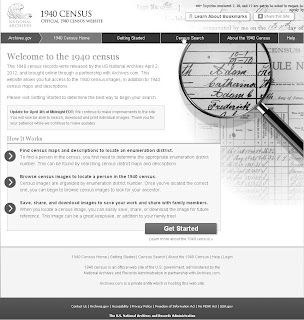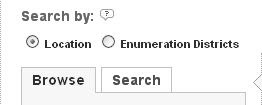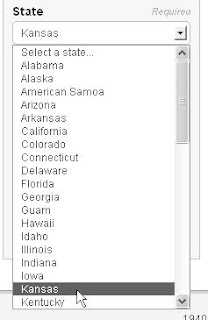The Dayton Public Library has about 75 shelf feet of published books that list immigrant passengers of ships that arrived in the New World. Each book lists from 50,000 to as many as 500,000 passengers' names, along with the date of arrival and the ship name. There are no indexes of the names,except for some of the books that index just that book. Some of the series are grouped chronologically, but not all. Some books list all immigrants in alphabetic order, some by the ship's arrival in port. I have yet to review all, but at least some list the original sources that the volume documents
 |
| Books that list immigrants to America, Dayton public library, main branch |
Since Robert Schuh's questions about when each of the Kohn brothers emigrated, what ships they took, and where they arrived in the U.S., I've been planning the research that's needed to answer the questions. Not that I didn't have the same questions, but I put it off because I knew the detailed work that the research entails. Because of the huge number of secondary resources and the lack of indexes, I want to go through the volumes only once, though there are many ancestors who made the crossing at various times.
I am now building a spreadsheet that lists each person who emigrated. Where possible, I'm including the last known date in Europe and the first known date in the U.S. I'm lucky for the Johann Reinert family and two of the Kohn brothers. (See the list in the report about Robert Schuh's visit.)
But I plan to include as many emigrées as possible, including these ancestors:
- Great-grandmother Maria Stephan left Königheim, in today's Main-Tauber-Kreis of Baden-Wurttemberg and was naturalized in 1872 or 1873. (She was born in 1849.)
- Great-grandfather Anton Deneke left Brakel, in today's Kreis Höxter, Nordrhein-Westfalen and apparently immigrated in 1872. He resided in Cincinnati, Ohio before 1876. (He was born in 1836.)
- Great-grandmother Leopoldina Salinger left Breisach-am-Rhein, in today's Kreis Breisach, Baden-Wurttemberg, perhaps in 1872 with a sister Maria Anna Josepha Salinger and brother Anton Hermann Salinger. (They were born in 1839, 1838, and 1836.)
- Great-grandfather Robert Ohnsat left Grüben, in what was once Kreis Falkenberg, Schlesien, Ostpreußen, but now called Grabin, in Niemodlin county, Opole, Poland. He resided in Pittsburgh, Pennsylvania by 1872, as did his brother Joseph Ohnsat. It's possible that another brother Carl Anton Ohnsat emigrated and settled in the Detroit, Michigan area. (They were born in 1835, 1842, and 1844.)
- Second-great-grandparents John Butler and Mary Kennedy left Thomastown, County Kilkenny, Ireland with their four children to settle in or near Syracuse, New York by February 1837. (They were born in 1801 and 1797.)
- Second-great-grandparents Dennis Cummings and Margaret Walsh, who left Ireland, perhaps with their family of two daughters. They were recorded in the 1860 U.S. Federal Census in Dane County, Wisconsin. (They were born in 1806 and 1800.)
- Chuck's grandfather Giovanni (John) Iacano or Chuck's great grandparents Francesco Gacomo and Francesca Rovetto left Ragusa, Siracusa Province, Sicily. If it was his grandfather Giovanni, he arrived on his own—or perhaps with a brother Emanuel—on 20 March 1904. (They were born in 1882, about 1855, and about 1855.)
- Chuck's great grandparents Vincenzo Russo Femminella and Rosa Blogna (or Bologna) left Miltello Rosmarino, Messina Province, Sicily, arrived at Ellis Island on 29 June 1911 with their two children Angela, who is Chuck's grandmother, and her brother Biagio. (They were born in 1879 and about 1869.)
- Chuck's great grandfather Charles Derry, or Chuck's 2nd great grandfather, whose name is unknown so far, were in the United States before 1857. (He was born about 1820.)
- Full name
- Likely date of arrival, or range of time
- Departure port
- Accompanying family members and their relationships
2012.06.02
I added the brothers to Robert Ohnsat and added birth years for each person.
2012.05.08
I added dates to the listed family who immigrated.
2012.05.01
A discussion of American immigration by ship refers to the National Archives holdings and essential secondary sources in multi-volume books. The Dayton and Montgomery County Public Library has some of these multi-volume books in its 75 shelf feet of materials. They include:
- The famine immigrants : lists of Irish immigrants arriving at the port of New York, 1846-1851 Ira A. Glazier, editor ; Michael Tepper, associate editior. (7 v. : ill. ; 24 cm. Contents: v.1. January, 1846-June, 1847.--v.2. July 1847-June 1848.--v.3. July 1848-March 1849.--v.4. April 1849-September 1849.--v.5. October 1849-May 1850.--v.6. June 1850-March 1851.--v.7. April 1851-December 1851.) The Great Potato Famine, brought on by a blight that struck the potato crop, reduced nearly all of Ireland to poverty. Between 1846-1851 over a million men, women, and children emigrated to the U.S. and Canada, the majority of them entering through the port of New York. In essence, this work is a chronological listing of nearly 651,000 passengers with name, age, sex, occupation, date of arrival, port of embarkation, and vessel.
- Germans to America. series II : lists of passengers arriving at U.S. ports in the 1840s edited by Ira A. Glazier. (v. <1-7 > : ill., maps ; 24 cm. Contents: v. 1. January 1840-June 1843 -- v. 2. July 1843-December 1845 -- v. 3. January 1846-October 1846 -- v. 4. November 1846-July 1847 -- v.5. July 1847-March 1848 -- v.6. April 1848-October 1848 -- v.7. October 1848-December 1849.) Approximately 70,000 names in each volume. Lists are arranged chronologically by ship arrival. "Every passenger is identified by full name, age, sex, occupation, destination and when . . . available [the] country, province, or town of origin."
- Italians to America : lists of passengers arriving at U.S. ports edited by Ira A. Glazier and P. William Filby. (v. ; 24 cm. Contents: v. 1. January 1880-December 1884 -- v. 2. January 1885-June 1887 -- v. 3. July 1887-June 1889 -- v. 4. July 1889-Oct. 1890 -- v. 5. November 1890-December 1891 -- v.6. January 1892-December 1892 -- v.7. January 1893-September 1893 -- v.8. October 1893-May 1895 -- v.9.June 1895-June 1896 -- v.10. July 1896-June 1897 -- v.11. June 1897-May 1898 -- v.12. May 1898-April 1899 -- v.13. May 1899-November 1899 -- v.14. December 1899-May 1900 -- v.15. May 1900-November 1900 -- v.16. November 1900-April 1901 -- v. 17. April 1901-September 1901 -- v.18. October 1901-March 1902 -- v.19. April 1902-June 1902 -- v.20. June 1902-October 1902 - v.21. November 1902-March 1903 - v.22. March 1903-April 1903 - v.23. April 1903-June 1903 - v.24. June 1903-October 1903 - v.25. October 1903-March 1904 - v.26. March 1904-May 1904.. Includes indexes.)
- Emigrants from Baden and Württemberg in the eighteenth century by Brigitte Burkett.
- Nineteenth century emigrants from Baden : volume 2 : Graben, Linkenheim, Spöck & Staffort / by Brigitte Burkett.
- German immigrants, 1820-1920 / by Helen Frost. (32 p. : ill. (some col.) ; 21 cm. Contents: Early German immigrants -- Life in the old country -- The trip over -- Arriving in America -- Surviving in America -- Keeping traditions -- Timeline -- Famous German-Americans -- Words to know -- To learn more -- Places to write and visit -- Internet sites.)
- Passenger and immigration lists bibliography, 1538-1900: being a guide to published lists of arrivals in the United States and Canada / edited by P. William Filby. Gives "full bibliographic information for more than 2,550 published passenger and immigration lists." A revision of A Bibliography of Ship Passenger Lists, 1538-1825, compiled by Harold Lancour. 3rd ed., rev. and enl. by Richard J. Wolfe, 1963.
- Passenger and immigration lists index: a guide to published arrival records of about 500,000 passengers who came to the United States and Canada in the seventeenth, eighteenth, and nineteenth centuries / edited by P. William Filby, with Mary K. Meyer. (3 v. (xxxv, 2339 p.) ; 29 cm.) Alphabetical listing of passengers who arrived in North America and the West Indies between 1538-1900, compiled from published sources: passenger lists and naturalization records. Entries include age; year of arrival or naturalization, with an abbreviation for the bibliographic citation with volume and page. Some 125,000 names are added annually in the published Supplements.
- Passenger and immigration lists index. Supplement. (v. ; 29 cm. Latest issue consulted: 2005. Issued in two pts. per year, 1998-<2004> Cumulates in: Passenger and immigration lists index. cumulated supplements.)
- The Immigration History Research Center : a guide to collections compiled and edited by Suzanna Moody and Joel Wurl ; production coordinated by Judith Rosenblatt and Anne Bjorkquist Ng ; foreword by Rudolph J. Vecoli.
2012.05.08
The website Immigrant Arrivals: A Guide To Published Sources includes these other relevant sources, which may be in the Dayton library.
- Hamburg (Germany). Auswanderungsamt. [Records, 1850-1873.] LC call number: Microfilm 10,897GA-43N-43P Listen Direkt, Manuscript Division; Microfilm 10,897GB-23N-23P Listen Indirekt, Manuscript Division LC control number: mm 83070243
Finding aid, Manuscript Division Reading Room. See also the vertical file, LH&G. Names east European emigrants from two lists covering the period 1850-1873: Direct Lists (indexed) are passengers who sailed directly from Hamburg, Germany, to their destination; Indirect Lists (indexed) names passengers who sailed from Hamburg, but who stopped at another European port before reaching their destination. Handwritten in German script, the names are arranged by first letter of the surname. Entries include name of the ship, master of the vessel, departure date, name of passenger, age, previous residence, occupation, and destination.
- Irish Passenger Lists, 1847-1871: List of Passengers Sailing from Londonderry to America on Ships of the J. & J. Cooke Line and the McCorkell Line. Compiled under the direction of Brian Mitchell. Baltimore: Genealogical Pub. Co., 1988. xvii, 333 p., ill., index. LC call number: E184 .I6I69 1988 LC control number: 87082306
For business reasons two Londonderry shipping firms kept passenger lists of their Atlantic crossings: J. & J. Cooke, 1847-1867, and William McCorkell & Co., 1863-1871. Cooke's include name of ship, year of embarkation, destination, Irish address of the passenger (usually town), and ages of children. The McCorkell lists provide name and address of passenger, month and year of embarkation, ages of children, month and year "engaged" at Philadelphia by the Robert Young and Co., name of the ship, month and year of embarkation.
- Kaminkow, Jack and Marion. A List of Emigrants from England to America, 1718-1759. Baltimore, Md.: Magna Carta Book Co., 1988. xxvii, 292 p. Includes 3,000 names. "Transcribed from microfilms of the original records at the Guildhall, London." LC call number: E187.5 .K3 1988 LH&G LC control number: 88083835
- Luxembourgers in the New World: A Reedition Based on the Work of Nicholas Gonner, "Die Luxemburger in der Neuen Welt," Dubuque, Iowa, 1889. Edited by Jean Ensch, Jean-Claude Muller, Robert E. Owen; original translations by Gerald L. Liebenau and Jean-Claude Muller. Esch-sur-Alzette, Grand Duchy of Luxembourg: Editions-Reliuers Schortgen, 1987. 2 vols. Ill. LC call number: E184 .L88L89 1987 LH&G LC control number: 87170772
Vol. 1, discussion of Luxembourger emigration, 1840-1890, with comments on settlements, occupations, and activities in the U.S. Vol. 2, principally an index to approximately 4,000 personal and place names cited in the Luxembourger Gazette (Dubuque, Iowa), 1872-1892.
- Schenk, Trudy, Ruth Froelke, and Inge Bork. The Wuerttemberg Emigration Index. Salt Lake City, Utah: Ancestry, Inc., 1986-92. LC call number: CS627 .W86S34 1986 LH&G LC control number: 85052453
Projected 8-volume work, each with approximately 12,000 names of individuals derived from 19th-century immigration registers of Wuerttemberg, Germany. Data include date and place of birth, date of emigration application, destination, home district of the applicant, and number of the microfilmed originals at the Genealogical Society of Utah.
Further reading may be necessary at these websites.
- PASSENGER LISTS: The Pitfalls - A Personal Experience
- Finding Passenger Lists & Immigration Records 1820-1940s






































